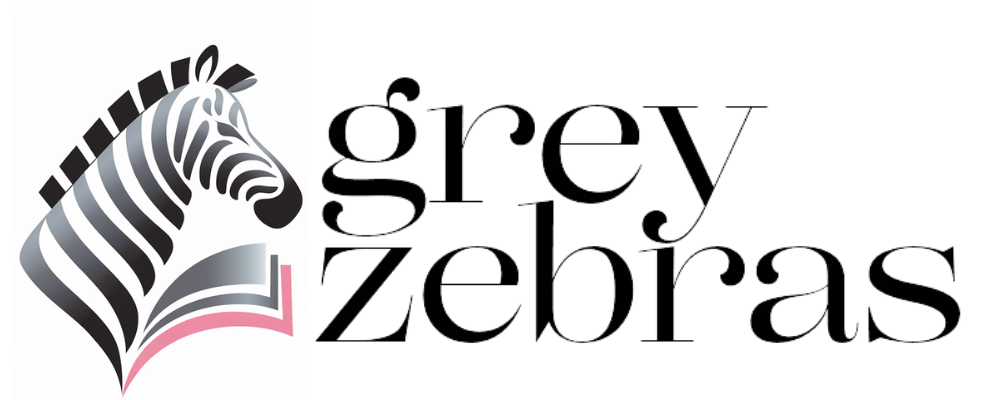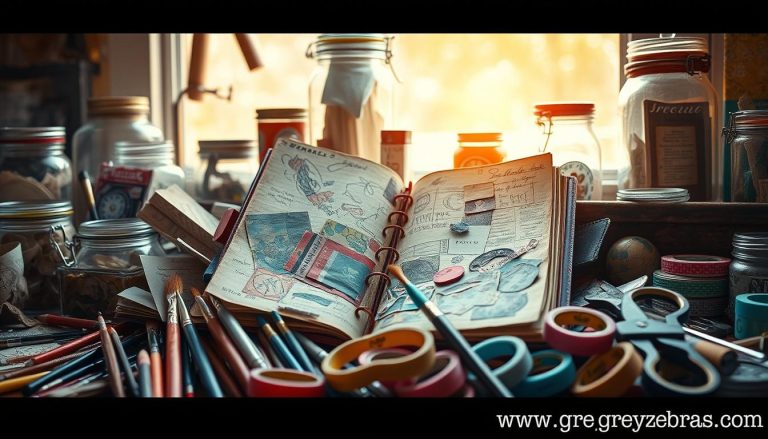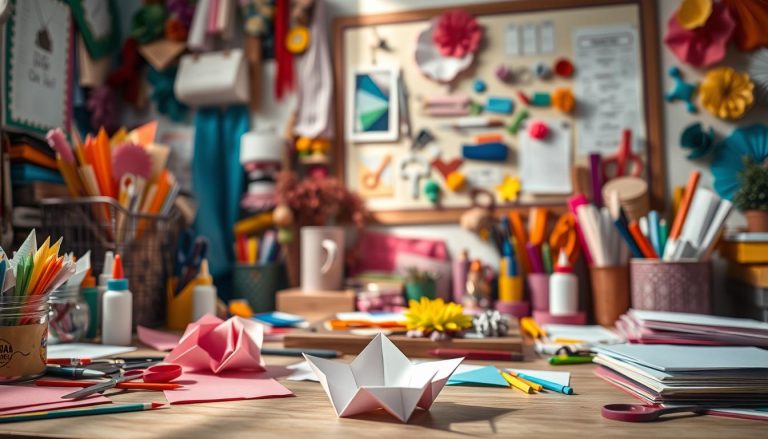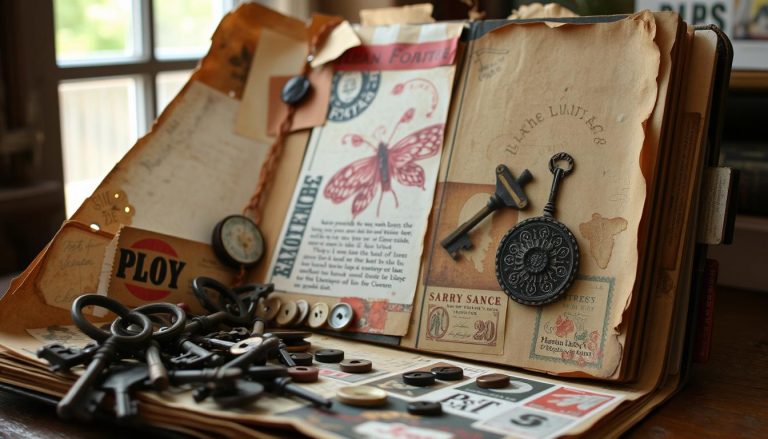Beginner’s Guide to Junk Journal Kits: What to Include
Welcome to our comprehensive guide on creating a beginner’s junk journal kit. In this article, we will walk you through the essential supplies and steps to craft your own personalized junk journal.
Whether you’re a seasoned crafter or a newcomer to the world of junk journaling, this guide is designed to be friendly and accessible, helping you to get started on your creative journey. With beginner junk journal tips, you’ll be able to create a unique and beautiful journal that reflects your personality.
By following our DIY junk journal kit guide, you’ll learn how to curate a collection of materials that will inspire your creativity and help you to produce a one-of-a-kind journal.
Key Takeaways
- Essential supplies for a beginner’s junk journal kit
- Steps to create a personalized junk journal
- Tips for customizing your journal with unique materials
- Ideas for inspiring your creativity
- Guidance on getting started with junk journaling
Grab 50 FREE Mental Health Clip Art
Understanding Junk Journaling and Its Appeal
With its eclectic mix of materials and techniques, junk journaling is an art form that continues to grow in popularity. This creative hobby involves combining various materials and ephemera to create unique and personalized journals.
What is Junk Journaling?
Junk journaling is a form of artistic expression that involves creating journals using recycled and vintage materials. It’s about experimenting with different textures, colors, and junk journal embellishments to create a one-of-a-kind journal. By repurposing old materials, junk journaling promotes sustainability and creativity.
The Benefits of Junk Journaling
The benefits of junk journaling are numerous. It fosters creativity, provides a means of self-expression, and results in the creation of unique keepsakes. For those looking for a new hobby, junk journaling offers a fun and engaging way to explore one’s creativity and develop junk journal ideas.
Popular Uses for Junk Journals
Junk journals can be used in a variety of ways, including scrapbooking, art journaling, and as a tool for mindfulness. They can also serve as personalized gifts or keepsakes for special occasions. For beginners, understanding how to start a junk journal can be the first step into this creative world.
Essential Supplies for Your Junk Journal Kit
Creating a junk journal kit requires a thoughtful selection of junk journal supplies and junk journal materials. The right combination of papers, tools, and decorative elements will help you create unique and personalized journals. By understanding the junk journal essentials, you can set up your kit to inspire creativity and flexibility.
Types of Paper to Include
The foundation of any junk journal is the paper. You’ll want to include a variety of textures and colors to add depth and interest to your pages. Some popular types of paper to consider are:
- Vintage prints and music sheets for a nostalgic feel
- Textured papers, such as handmade or watercolor paper, for added tactile experience
- Colored and patterned papers to add visual appeal
- Newspaper clippings or magazine cutouts for a collage effect
Recommended Tools and Equipment
To work effectively with your junk journal supplies, you’ll need some basic tools and equipment. These include:
- Scissors and craft knives for cutting paper and other materials
- Adhesives, such as glue sticks, tape runners, or spray adhesive, for securing elements
- Journal covers or bookboards for creating sturdy journal bases
- Binding materials, like twine, ribbon, or staples, for assembling your journal
Decorative Elements to Consider
To add personality and flair to your junk journals, incorporate a range of decorative elements. Some ideas include:
- Embellishments, such as buttons, ribbons, or fabric scraps, for added texture and interest
- Washi tape and masking tape for creating borders or accents
- Stamps and stencils for adding patterns and designs
- Photographs, ticket stubs, or other ephemera to personalize your journal
Finding Paper and Material Sources
One of the joys of junk journaling is hunting down unique papers and materials to include in your kit. This process not only adds a personal touch to your journal but also makes the crafting experience more enjoyable and fulfilling.
Recycling Household Items
Before buying new supplies, consider what household items you can repurpose for your junk journal kit. Old greeting cards, music sheets, and pages from vintage books can add a unique touch to your journal. You can also use fabric scraps, lace, or other textile materials to create interesting textures and dimensions.
Additionally, think about scanning your home for other recyclable materials like newspaper clippings, magazine cutouts, or even old maps. These items can be used to create collages, backgrounds, or embellishments in your journal.
Purchasing Vintage and Unique Papers
If you’re looking to expand your collection beyond household items, consider purchasing vintage and unique papers. Antique stores, thrift shops, and online marketplaces are great resources for finding one-of-a-kind papers that can add character to your junk journal.
When shopping for vintage papers, look for textures, colors, and patterns that resonate with your journal’s theme or style. You can also find inspiration in the papers themselves, as they often evoke a particular era or aesthetic.
- Visit local antique stores or vintage shops for unique paper finds.
- Explore online marketplaces like eBay or Etsy for rare and specialty papers.
- Attend craft fairs or paper crafting events to discover new and unusual papers.
Using Ephemera from Local Crafts Stores
Local crafts stores are a treasure trove for junk journalers, offering a wide range of ephemera that can be used to embellish your journal. From die-cuts and stickers to washi tape and other embellishments, these stores provide the materials you need to add visual interest and personality to your journal.
When shopping at crafts stores, keep an eye out for items that fit your journal’s theme or color scheme. You can also experiment with different techniques, such as layering or distressing, to incorporate these materials into your journal.
By combining recycled household items, vintage papers, and crafts store ephemera, you can create a rich and diverse junk journal kit that inspires creativity and reflects your personal style.
Crafting a Personalized Junk Journal
Crafting a personalized junk journal is a journey of creativity and self-expression. It’s about transforming a collection of disparate elements into a cohesive, meaningful keepsake. To start, you’ll need to decide on a theme or style that resonates with you, which will guide your choices as you gather materials and embellishments.
Choosing a Theme or Style
Selecting a theme or style for your junk journal is the first step in giving it a personal touch. Consider what inspires you or what you’re passionate about. Some popular junk journal ideas include:
- Travel journals filled with maps, ticket stubs, and postcards
- Gardening journals that incorporate seed packets and flower petals
- Memoir journals that include photographs and mementos from significant life events
Your theme will help you decide on the types of papers, embellishments, and other elements to include. For beginner junk journal tips, start by gathering a variety of materials and then narrow down your choices based on your theme.
Designing Your Journal Cover
The cover of your junk journal is the first thing people will see, so make it count. You can use a variety of materials, from sturdy cardstock to decorative paper or even fabric. Consider adding embellishments like ribbons, buttons, or other ephemera to give it a personal touch. For a beginner, it’s helpful to keep it simple and focus on the overall aesthetic you want to achieve.
Some beginner junk journal tips for designing your cover include:
- Keep your theme in mind when choosing materials
- Experiment with different textures and colors
- Don’t be afraid to try new things and make mistakes
Binding Techniques to Try
Once you’ve filled your journal with pages, you’ll need to bind it together. There are several binding techniques you can try, depending on the look and durability you’re aiming for. Some popular methods include:
- Sewing: Using a needle and thread to stitch your pages together
- Adhesive: Using glue or another adhesive to attach your pages
- Ribbon binding: Using a ribbon to tie your journal together
For how to start a junk journal, consider starting with a simple binding technique and then experimenting with more complex methods as you gain experience.
Incorporating Mixed Media in Your Journal
Mixed media can bring a new dimension to your junk journaling, making each page a discovery. By incorporating a variety of materials and techniques, you can create a truly unique and captivating journal that reflects your personality and creativity.
Types of Mixed Media Supplies
To get started with mixed media in your junk journal, you’ll need a range of supplies. Consider using paint, ink, and fabric to add color and texture. Other embellishments like buttons, ribbons, and found objects can also enhance your journal pages. As you explore different materials, remember that the key to a great junk journal is experimentation and having fun.
Some popular mixed media supplies for junk journaling include:
- Acrylic paints and mediums
- Watercolor inks and dyes
- Textiles like lace, felt, and cotton fabric
- Paper ephemera, such as vintage book pages and music sheets
- Found objects, like seashells, keys, or other small trinkets
Tips for Layering Elements
Layering different elements is crucial for creating depth and visual interest in your junk journal. Start by building a base layer with a background image or color, then add subsequent layers with different textures and materials. As
“The art of junk journaling is all about embracing the unexpected and making it your own.”
, layering is a great way to achieve this.
Some tips for effective layering include:
- Start with a cohesive color palette to tie your layers together.
- Experiment with different textures, like smooth paper and rough fabric.
- Balance busy elements with simpler ones to avoid overwhelming the page.
Experimenting with Textures and Colors
Textures and colors play a significant role in making your junk journal unique. Don’t be afraid to experiment with different combinations to find what works best for you. For example, pairing smooth, glossy paper with rough, handmade paper can create an interesting contrast. Similarly, using a mix of bright, bold colors and muted, earthy tones can add visual interest.
Some ideas for experimenting with textures and colors include:
- Creating a monochromatic page with different shades of a single color.
- Incorporating natural textures, like leaves or fabric, into your journal.
- Using metallic or iridescent elements to add a touch of luxury.
Tips for Organizing Your Junk Journal Materials
Organizing your junk journal supplies is crucial for a smooth and enjoyable crafting experience. A well-organized workspace not only boosts your productivity but also inspires creativity. In this section, we’ll explore practical tips on how to keep your junk journal materials tidy and easily accessible.
Storage Solutions for Your Supplies
Effective storage is the backbone of an organized workspace. Consider using stackable plastic bins or wooden crates to store your junk journal supplies. Labeling each container can help you quickly identify what’s inside, saving you time and reducing clutter.
- Use small containers for tiny items like buttons, beads, or embellishments.
- Store paper and cardstock in a dry, flat area to prevent damage.
- Invest in a crafting cart or storage ottoman for additional storage and workspace.
Keeping Your Workspace Efficient
Maintaining an efficient workspace is vital for productivity. Ensure your workspace is well-lit and ergonomic. Consider the following tips to enhance your workspace efficiency:
- Keep frequently used supplies within easy reach.
- Use a craft mat to define your workspace and protect your work surface.
- Invest in a comfortable, ergonomic chair to reduce fatigue during long crafting sessions.
Inventory Management Strategies
Managing your inventory effectively is key to avoiding waste and ensuring you have the materials you need. Here are some strategies to help you manage your junk journal supplies:
| Supply Category | Storage Tip | Benefits |
|---|---|---|
| Paper and Cardstock | Store flat in labeled folders or bins. | Easy access, reduced damage. |
| Embellishments | Use small containers or jars for storage. | Prevents loss, easy to organize. |
| Tools and Equipment | Store in designated drawers or on a pegboard. | Enhances workspace efficiency, reduces clutter. |
By implementing these storage solutions, workspace efficiency tips, and inventory management strategies, you’ll be able to focus more on the creative process and less on searching for misplaced supplies. Happy crafting!
Creative Ideas for Journal Pages
Transforming your junk journal into a treasured keepsake requires some creative flair. To get you started, we’ll explore various techniques for making your journal pages truly special.
Adding Photographs and Mementos
Incorporating personal photographs and mementos into your junk journal adds a layer of emotional depth. Consider using adhesive techniques like glue or tape to secure these elements.
You can also use photo corners or adhesive dots to attach photos without damaging them. This allows for easy removal if you wish to re-arrange your journal pages.
Journaling Prompts to Inspire You
Sometimes, all you need is a spark to get your creative juices flowing. Here are some journaling prompts to inspire you, helping you to start or enhance your junk journal:
- Describe a memorable vacation.
- Write about a person who inspires you.
- Document a daily routine or a special event.
Using Stamps and Stencils
Stamps and stencils are versatile tools for adding decorative elements to your journal pages, serving as great junk journal embellishments. You can use them to create patterns, add text, or embellish your photographs.
Here are some popular stamp and stencil techniques to consider when figuring out how to start a junk journal:
| Technique | Description |
|---|---|
| Layering | Layering stamps and stencils to create complex designs. |
| Coloring | Using colored pencils or markers to add color to stamped images. |
| Masking | Using stencils as masks to protect certain areas while coloring or stamping. |
Joining the Junk Journaling Community
As you dive deeper into junk journaling, you’ll find that being part of a community can be incredibly rewarding. The junk journaling community is filled with creative individuals who share your passion for mixed media and crafting.
Online Forums and Social Media Groups
Joining online forums and social media groups is an excellent way to connect with other junk journaling enthusiasts. Platforms like Facebook, Instagram, and Pinterest have numerous groups dedicated to junk journaling where you can share your work, get feedback, and stay updated on the latest trends. For instance, using relevant hashtags like #junkjournaling or #mixedmedia can help you discover new techniques and inspiration.
- Facebook Groups: “Junk Journaling Enthusiasts” and “Mixed Media Journaling”
- Instagram: Follow hashtags like #junkjournal, #junkjournaling, and #mixedmedia
- Pinterest: Boards dedicated to junk journaling and mixed media art
Attending Local Workshops or Classes
Attending local workshops or classes is another fantastic way to engage with the junk journaling community. Not only do you get hands-on experience with new techniques, but you also meet people who share your interests. Many local craft stores, community centers, and art schools offer classes on junk journaling and mixed media.
| Benefit | Description |
|---|---|
| Hands-on Experience | Learn new techniques and gain practical experience |
| Networking | Meet fellow crafters and make new friends |
| Inspiration | See others’ work and get inspired by their creativity |
Participating in Challenges and Swaps
Participating in challenges and swaps is a great way to push your creativity and learn from others. Many online communities organize regular challenges and swaps where participants are given a theme or specific requirements to create a journal page or spread.
- Improved creativity through themed prompts
- Opportunities to receive feedback and constructive criticism
- A chance to showcase your work and gain recognition
By engaging with the junk journaling community through online forums, local workshops, and challenges, you can enhance your crafting skills, stay inspired, and be part of a supportive and creative network.
Final Thoughts on Starting Your Junk Journal Kit
As you embark on your junk journaling journey, remember that the process is just as important as the end result. Creating a beginner’s junk journal kit is about gathering junk journal essentials and cultivating a creative habit.
Embracing the Creative Process
Embracing imperfection is crucial in junk journaling. It’s about experimenting with different junk journal ideas and techniques, even if they don’t turn out as expected. This freedom to make mistakes allows for true creativity to flourish.
Continuing to Grow
To keep your junk journaling journey exciting, continually seek out new materials and techniques to include in your What to Include in a Beginner’s Junk Journal Kit. This could mean exploring different textures, colors, and ephemera.
Celebrating Your Creations
Lastly, take time to celebrate your finished projects, no matter how big or small. Each completed journal is a testament to your creativity and dedication to the craft.





